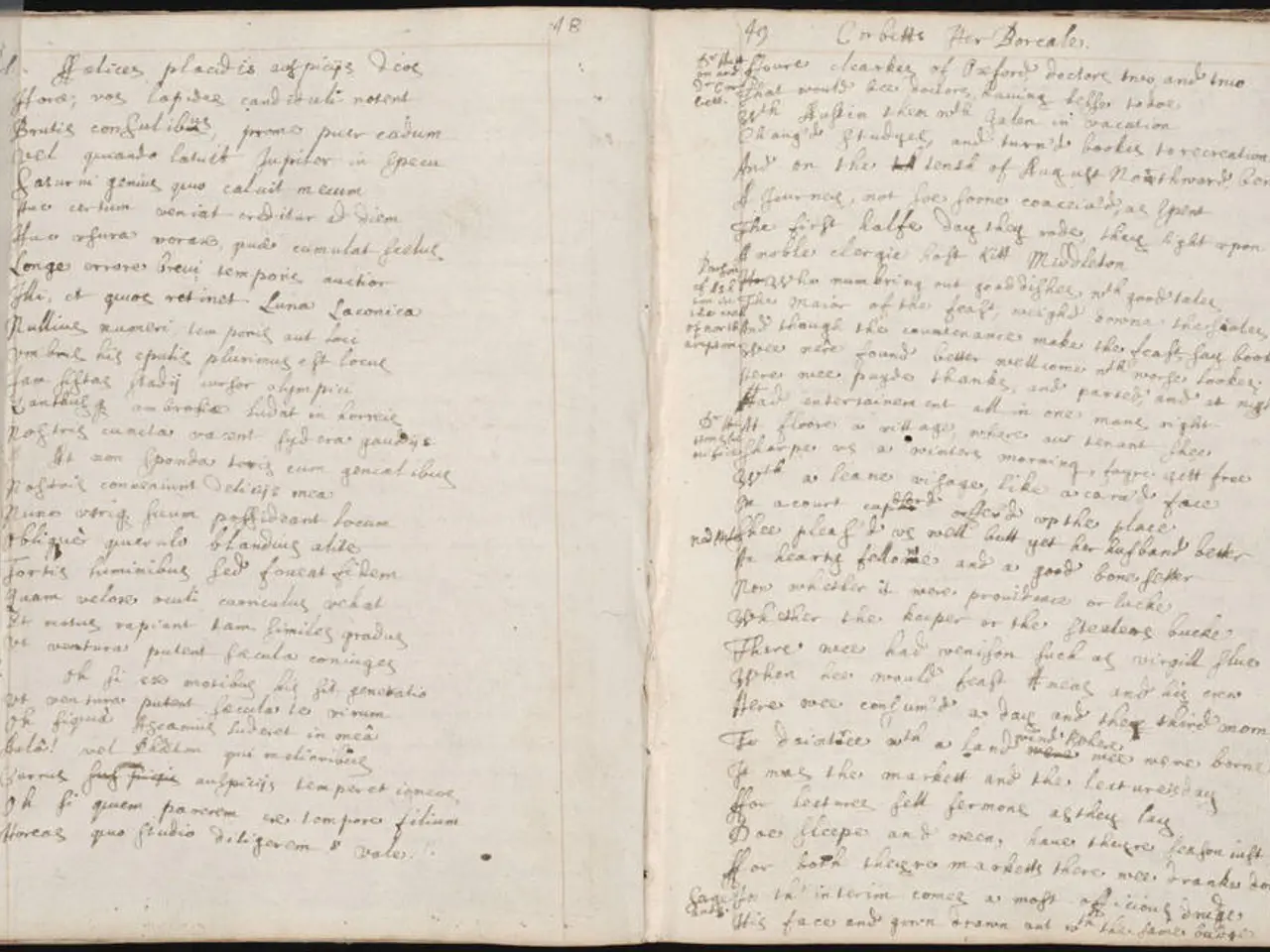Examining with Caution: Utilizing Archived Documents for Analysis
In the year 1715, Japanese author Chikamatsu Monzaemon penned a play that would significantly shape the Japanese perception of a 17th-century Ming Dynasty general: Zheng Chenggong, better known as Coxinga. Titled "The Battles of Coxinga," this puppet play elevated the Ming loyalist general to a heroic and almost legendary status in Japanese literature.
Zheng Chenggong was a historical figure, leading an attempt to restore the Ming Dynasty after its fall to the Qing in 1644. He resisted the Qing dynasty and fought against the Dutch presence in Taiwan, establishing a Ming restorationist base there. However, his efforts, while initially successful, ultimately failed after his death with the Qing conquest of Taiwan in 1683.
Chikamatsu's dramatization, contemporary to the Edo period's nationalist and ideological currents, presents Coxinga as a paragon of valor and loyalist virtues, aligning with Japanese values of loyalty and resistance. This literary treatment resonated with Edo-period ideals of loyalty, fealty, and heroic sacrifice, portraying the Ming dynasty sympathetically as legitimate rulers resisting foreign usurpation, and fitting within a broader Japanese cultural context that valorized figures opposing colonial or imperial forces.
The play became incredibly popular in Japan, helping to popularize a major Chinese figure in an otherwise isolationist country. The book "The Battles of Coxinga: Chikamatsu's Puppet Play, Its Background and Importance," published by Taylor's Foreign Press in London in 1951, provides insights into the background and importance of the play. The book also offers analysis of the play as a propagandist work, highlighting the differences in portrayals between Chikamatsu's version and Chinese writings of Zheng Chenggong's story.
In Chikamatsu's version, Zheng Chenggong fights only the Qing Dynasty, with no mention of the Dutch. This omission, along with the emphasis on Japanese military strategy and values, contributes to the idealized and heroic portrayal of Zheng Chenggong in the play. The book, edited by Donald Keene and Mark Van Doren, is a valuable resource for understanding how different historical narratives emerge and the influence of cultural and political narratives on historical portrayals.
It is important to note that the historical narrative of Zheng Chenggong has been subject to mediation and may contain degrees of "truthiness." The real Zheng Chenggong was half Chinese and half Japanese, but this is not reflected in Chikamatsu's portrayal of him. The historical reality of Zheng Chenggong is more complex and ultimately tragic, differing from the heroic portrayal in the play.
In conclusion, Chikamatsu's play reflects a significant influence of Japanese cultural and political narratives on the portrayal of Zheng Chenggong, prioritizing ideological symbolism and heroic idealization over strict historical accuracy. The play's portrayal of Zheng Chenggong as a Japanese hero, extolling his Japanese heritage, can be seen as a form of Japanese propaganda that idealized the Ming general as a symbol of heroic loyalty and righteous struggle.
The junior paper, titled "The Battles of Coxinga: A Study on Chikamatsu Monzaemon's Puppet Play and Its Impact on Education-and-self-development," could delve further into the play's significance as a propoganda tool, highlighting how it idealized the Ming general Zheng Chenggong. Additionally, the paper might explore the role of learning in the play, analyzing how it influenced the Japanese cultural perception of Zheng Chenggong.




